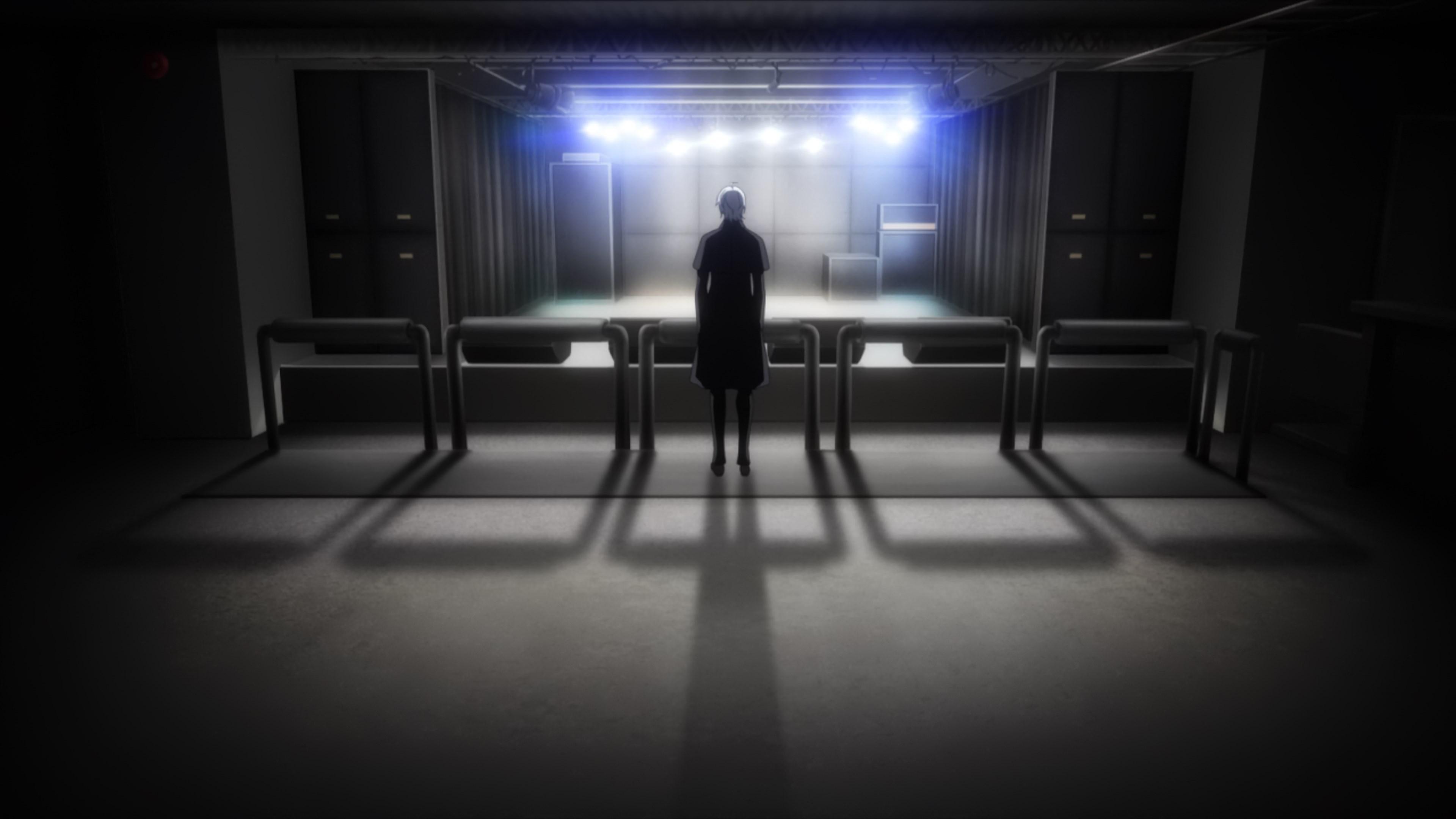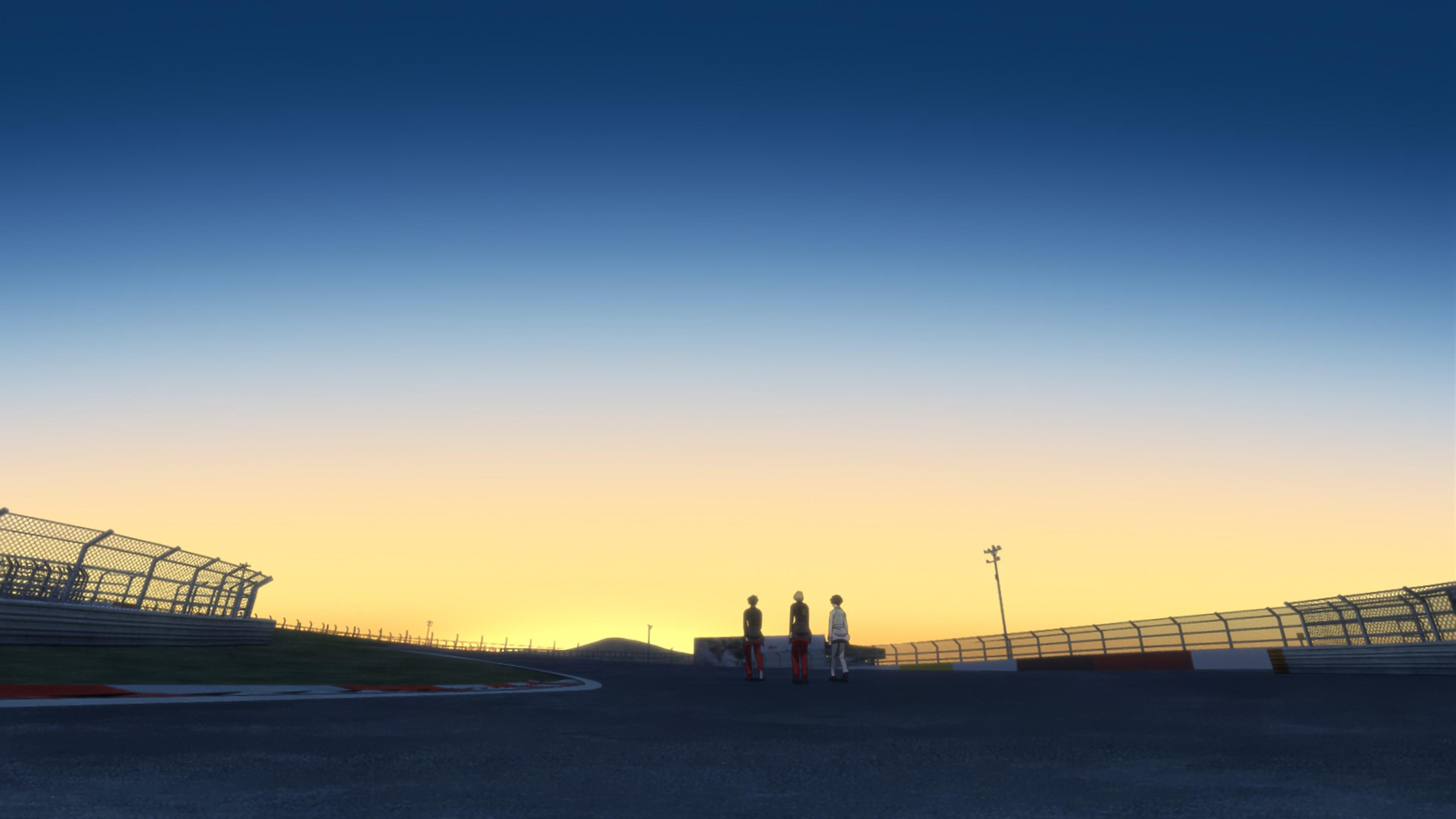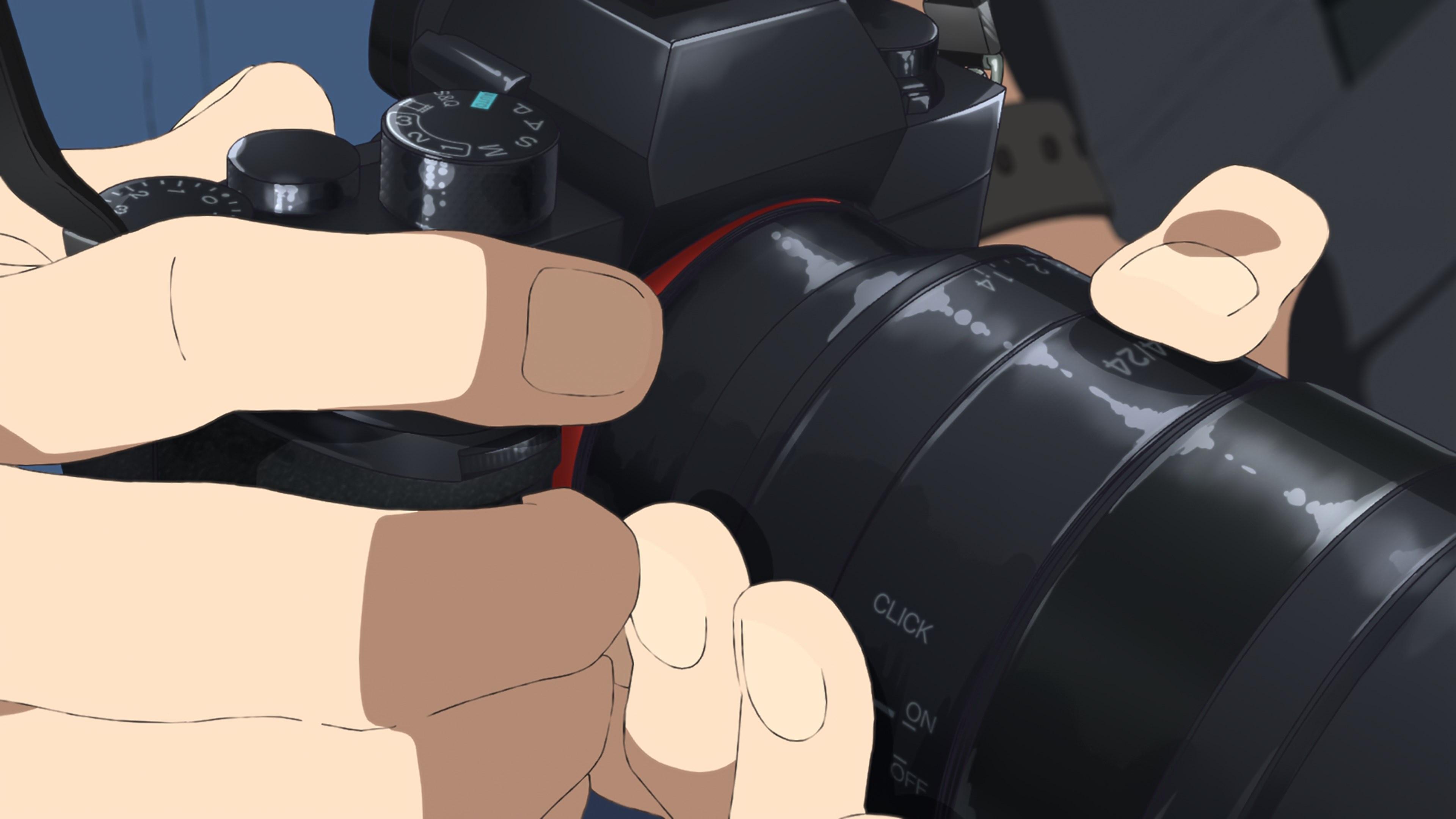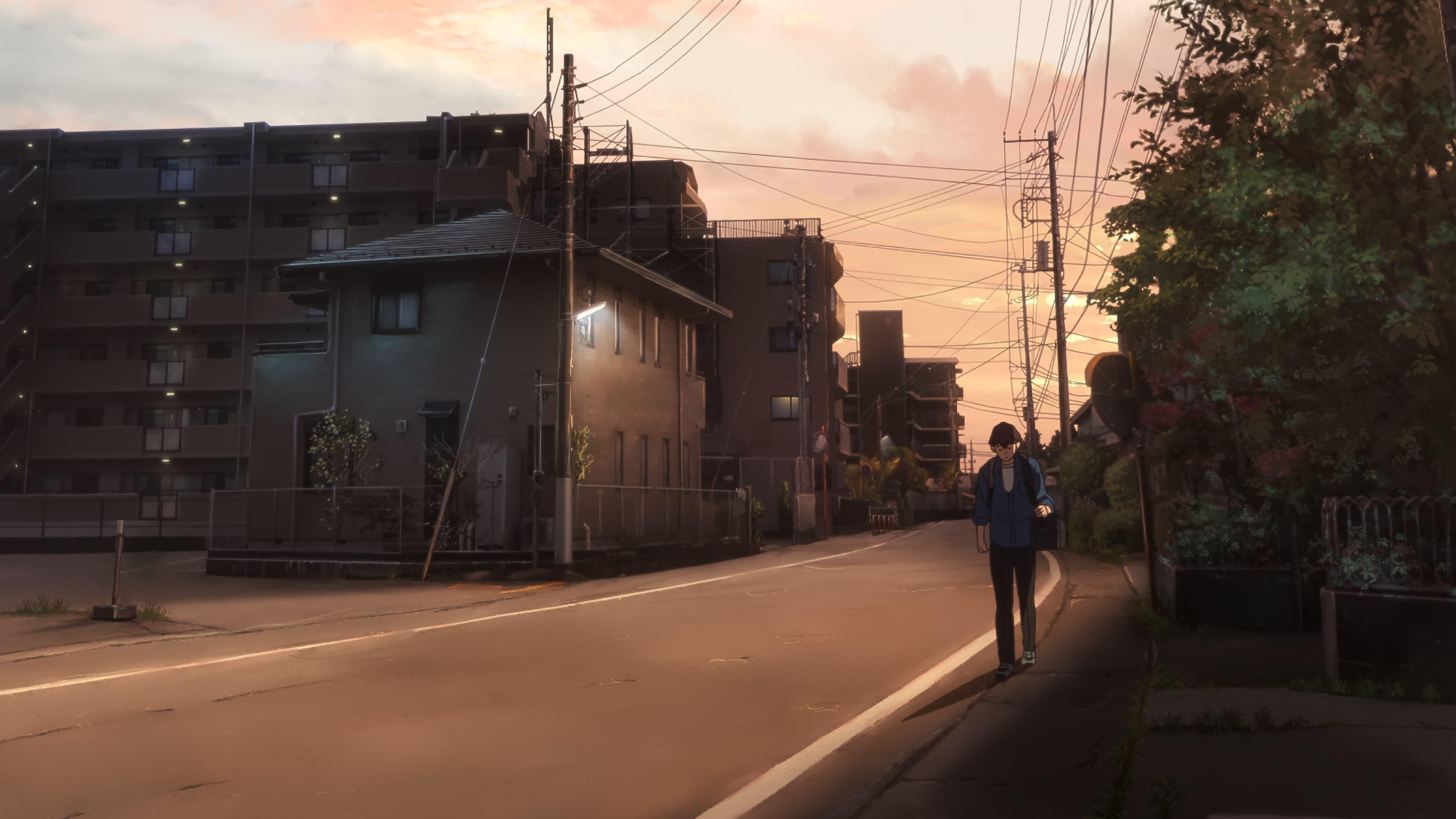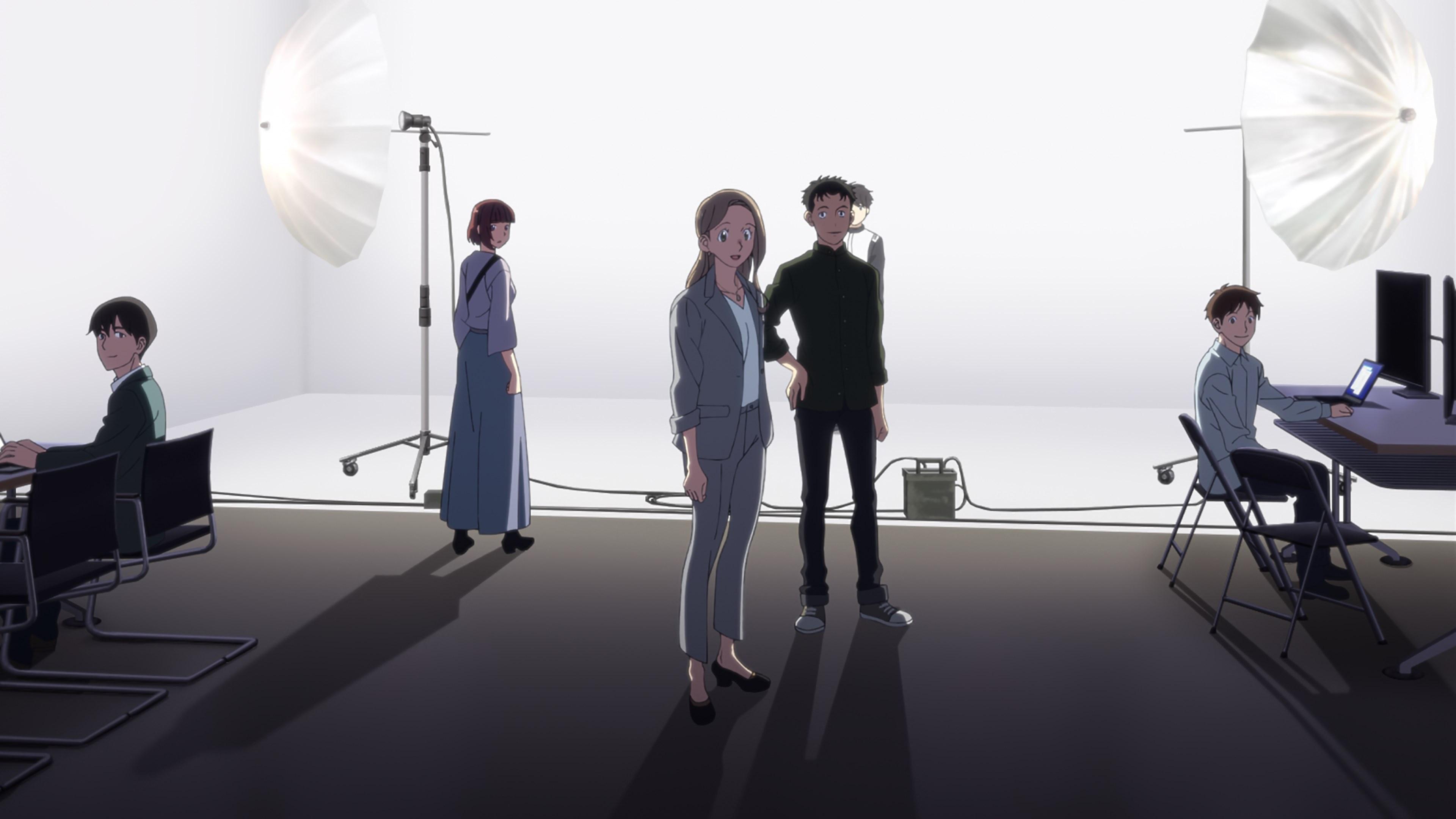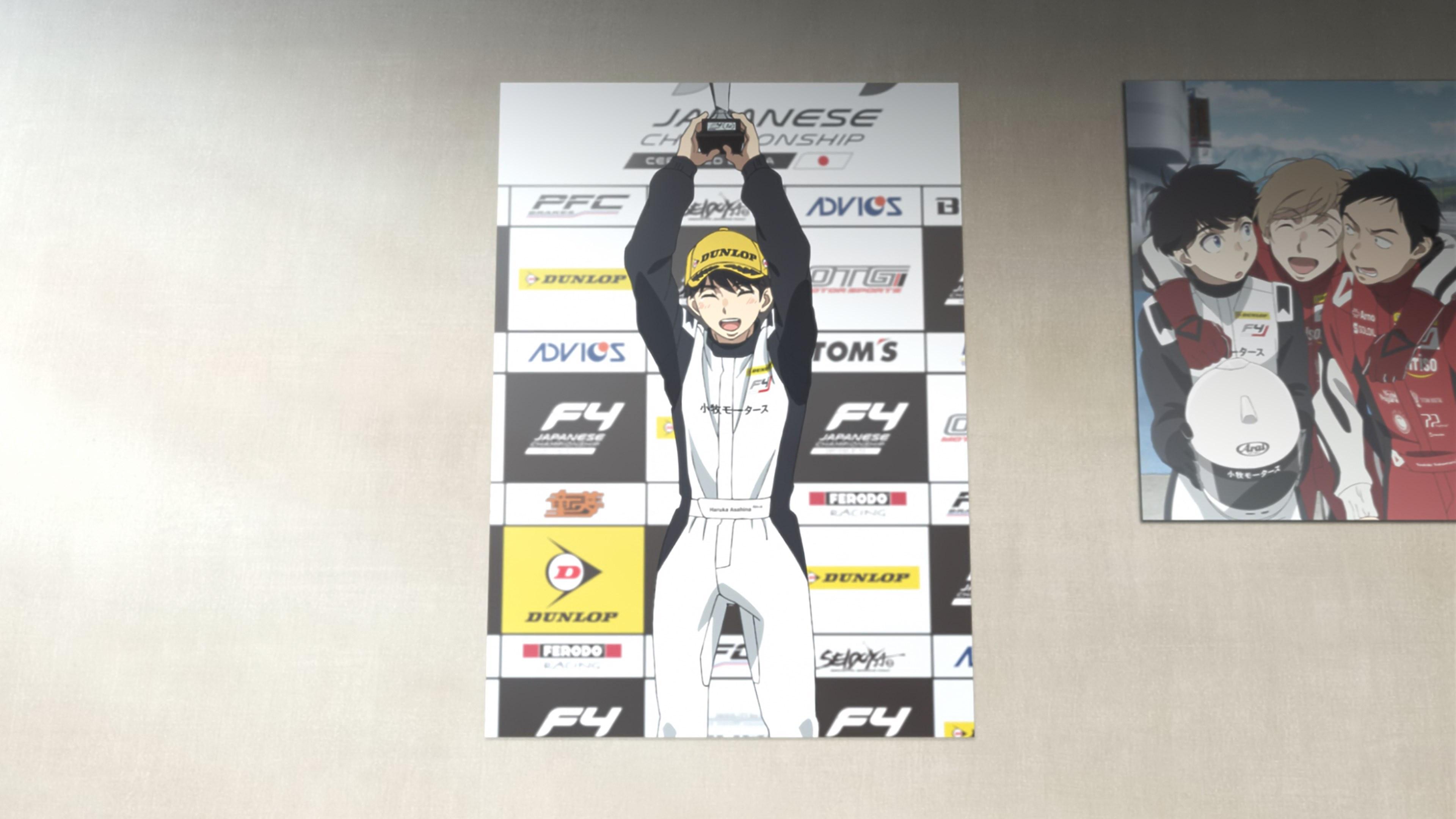Overtake! wasn’t first conceived as studio Troyca’s 10th anniversary project, but over many years of development, it came to naturally embody the studio’s current strengths: a beautiful mix of grounded, naturalistic writing with punchy, confident delivery. For an animation...
Overtake! wasn’t first conceived as studio Troyca’s 10th anniversary project, but over many years of development, it came to naturally embody the studio’s current strengths: a beautiful mix of grounded, naturalistic writing with punchy, confident delivery.
For an animation studio’s anniversary project to truly represent their unique culture, you’d expect to require a very deliberate planning process. By being conscious of that particular goal since the start, you could draft a narrative within familiar territory, design the animation according to the stylistic principles of your team, and even emphasize the themes you feel best embody the workplace; all of this, while ideally still creating something that is entertaining on its own, because that’s always the goal at the end of the day. That may very well be the best way to approach that challenge. In the real world, however, projects can start and idle around without such a clear goal. And yet, by letting one brew in the background for a long time, especially across a period where the studio is figuring itself out, all those qualities can still be naturally absorbed into an unplanned celebratory title. And that is exactly the case for Overtake!, which is the best way studio Troyca could have come up to celebrate their 10th anniversary despite having been given that responsibility late into its development.
Troyca was founded in 2013, owing its name to the circumstances behind its creation; it was indeed three people who formed the core of this new studio, all of whom with ties to their previous workplace of AIC. Namely, it was animation producer Yoshiyuki Nagano, photography director Tomonori Kato, and director Ei Aoki, all with enough experience in their roles to immediately gather a group of ex-AIC regulars behind them. Their old home was historied yet not particularly glamorous, in a way the ur-anime studio: lots of undeniable talent put to the whims of producers who would be content with low-brow projects, but also make wild swings every now and then. Very much in anime industry fashion too, AIC was a magnet for financial and management issues, something that was extremely obvious at the time. Just 3 months before the creation of Troyca, AIC Spirits members had gone independent to form Production IMS—and just 5 years later, that studio was physically shutting down amidst the cheers of certain people to whom they allegedly owed money. In a way, Troyca can count themselves lucky to even be in a position to celebrate a 10th anniversary, because that’s one cursed bloodline to bear.
Befitting that anything-goes background, Troyca quickly showed that they weren’t afraid of any particular genre, though they certainly had a propensity for the bombastic delivery of their lead director. Aoki was as versatile as his previous studio had needed him to be, but he didn’t achieve that by silencing himself; if anything, he found ways to loudly speak alongside each work rather than over them. In more precise terms, that means he’s got a talent for applying his grandiose, often Hollywood-esque mannerisms to all sorts of works. His idea of immersion involves physically strapping the viewer to a character, in ways so preposterous no one else would come up with them—a tradition that has spread across his pupils now that he is in a position to lead a studio. His shot composition tendencies are highly melodramatic, often using reflections to set up stark contrasts. If we look back at the works that inspired him as detailed in the Febri column that asks that question to famous creators, we won’t necessarily find the source of those specific quirks, but rather works that operate at a comparably outrageous volume. In particular, his love for Gunhed sums up a director who will often try so hard to do something cool that it will loop back into earnest and charming territory.
Those tendencies are very apparent in the studio’s earliest works. Troyca’s debut title was Aldnoah Zero, an appropriately dramatic original mecha anime that emphasized the twists and turns of the narrative over anything else. Its spiritual successor, Re:Creators, was allowed to take even wilder swings through its built-in metafictional framework. They are, take it out leave it, very straightforward implementations of Aoki’s blunt charm. It makes sense for loud direction and a loud script to work well together, as they’re stylistically on the same page. At that point, you’re also wishing for similarly emphatic animation, so that every aspect feels just as energetic; and thankfully, that is the case when it comes to the work of many AIC-related character animators who happened to join this team too.
On the other hand, combining that emphatic school of direction with understated writing opens the door to new types of synergistic excellence. You can have, for example, storyboards so blunt and readable on their own that the scripts can double down on their austere elegance without incurring a loss of clarity. It’s also possible to imbue grounded situations with massive gravitas, which is very useful from a character drama point of view; after all, when someone faces a problem, they’ll perceive it through personal lenses that might magnify it tremendously, rather than seeing it through a level-headed, objective point of view. And that is precisely the direction that the studio has evolved more towards, gradually nudged by a specific franchise that has kept them busy like no other. For half of the studio’s lifespan by now, we’ve been in the Idolish7 era.
As the title implies, i7 is an idol series centered around a group of 7 quirky boys—with original designs by shoujo manga legend Arina Tanemura, for my fellow Kamikaze Kaitou Jeanne fans. While you can never take that for granted, especially for josei-muke properties, the game’s massive success did translate into a high-profile adaptation effort where all parties felt genuinely invested. Mind you, that extends beyond TV, as the series has spawned a multitude of music videos by different cream-of-the-crop anime studios; although it’s not necessarily the best one, I have to shout out their eventual match between idol unit TRIGGER and their namesake studio, because that was something everyone joked about once it became clear that all major studios were candidates.
When it comes to its TV anime adaptation, and despite Troyca not being quite as big of a name as some of those music video destinations, fans have been treated to a level of commitment that is becoming rarer by the day. I use that word in particular to signal not just the admittedly harder-to-measure investment by the team, but also the sheer amount of workload that a relatively small studio has dedicated to this one franchise.
Although 3 TV shows might not sound like all that much on paper, things quickly pile up. Some of those series span multiple cours, and each one of those has a tendency to be longer than the norm to begin with; rather than the 12-13 episodes of a standard season, i7 will often push towards 17 to match their own magical number. Add to that other additional material, like an original Youtube series to give extra context to certain events and relationships, and you have a latenight series that has spanned for around 70 episodes by now, with likely a lot more to come. A rarity in an era of quickly churning out as many short titles as possible, and even more so once you consider that the team’s delivery has only become sharper along the way.
Back in 2018, the first season of Idolish7 already set the foundations of what was to come, with its solid ensemble cast dynamics and bursts of greatness in the delivery. Troyca have built an excellent relationship with ufotable, in no small part due to Aoki’s influential role over there as the director of Fate/Zero and Kara no Kyoukai, and some of the highlights in the first series are owed to that relationship. Episode #07 in particular was made all the more expressive by a multitude of ufotable animators playing it looser than they’re usually allowed to, matching the intensity of the in-house aces. Look no further than episode #15 for an excellent showcase of that in-house talent, embodied more boldly by Ryuichi Makino than by anyone else. Makino represents the team’s intensity with his violent emoting and an ability to, even when working with designs that aren’t particularly realistic, evoke true-to-life expressions that give an edge to his animation. In a situation where the ugly, manipulative side of the entertainment world is on full display, his drawings and animation can perfectly capture an emotional outburst.
The extravagant sequence that opens up the S2 finale with a staged twist is another example of that type of character animation the studio excels at. This one was animated by one Masako Matsumoto, who will be very relevant to a certain title.
The point when things got to the next level, though, was the following entries in the franchise—the Youtube series Vibrato, and i7’s TV sequel Second Beat!. Right off the bat, it’s easy to notice a big shift that brings them much closer to Aoki’s impactful style. The blunt way to express interiority defines most storyboards, while the lighting is a lot more involved in a way that also loops back into that type of very readable expression; after all, there’s no clearer contrast than the one between light and shadow, so many shot compositions start exploiting this approach. These changes are no surprise, as Aoki went from merely being billed as Supervisor of the show to having a more hands-on role in its production; in Vibrato’s case, actually being the one to open it up as the storyboarder and series director.
Aoki has continued being a regular contributor whenever he’s had the time, but even beyond all the storyboards he has personally drawn, it feels like the rest of the team has simply started following his guidelines more closely. Again, this isn’t surprising when it comes to all the younger directors who see him as their mentor, but it’s worth noting that even the veterans followed suit. That includes i7’s series director Makoto Bessho himself, who has come to embrace Aoki’s dramatic framing devices as his own. Besides an increase in quirky, charming storyboarding ideas, this shift led to an increase in confidence in the delivery, triggering that phenomenon we described earlier: when your direction is so easily readable, the script can afford to believe more in itself and the viewer.
For this change to reap any benefit, the writing would have to evolve alongside the direction. And thankfully, that’s exactly what happened. Series composer Ayumi Sekine had never led the writing process for a full-length anime, but was acquainted with the team from the tail-end of the AIC days, and despite mostly helping from the sidelines, still looks back at Aldnoah fondly for all the opportunities it gave her to branch out. With i7, we’ve been able to watch her evolve alongside not just Troyca’s staff, but also the original text as well; from starry-eyed beginnings with a bit more exposition than is natural, to a much more grounded and authentically delivered industry drama.
Although the series’ colorful cast makes it so that you always want some explicit reactions from the cast, the direction her writing was heading toward becomes clear when you examine the growth of this franchise. In a space like commercial TV anime, where scripts hold the hand of the audience to the point of not allowing them to think, she has been mastering the art of implications and elegant omissions. And she has done so alongside a team who give her room for that, encouraging it further with their assertive delivery.
Why dedicate this much attention to Idolish7 to talk about a different series, though? The truth is that it feels hard to understand why Overtake! excels in the ways it does without all this context. Earlier I pointed out that i7 has represented a huge workload for the studio, but I’m not sure that alone gets across that over 40% of the episodes Troyca had produced up till this season were for this series. If we limit it to the ones made since they began producing i7, it becomes two thirds of their total output. And that is precisely the long period that Overtake!’s production spans, involving many of these individuals we’ve been shouting out.
The series may not have been meant to become the studio’s 10th anniversary celebration title upon inception, but it stuck around for so long that it eventually stumbled onto that status. And in the process, it inherited all the tendencies that had been brewing in the franchise that had kept them occupied for the longest time. Just like how there are aspects of the series that you can’t fully grasp without knowing of Aoki’s melodramatic staging and the energy of the ex-AIC animators, an entire other side doesn’t make sense if you’re not acquainted with the grounded, naturalistic excellence they’ve been practicing with a certain group of male idols.
Has Overtake! really been floating around for so long, though? It’s been arguably even longer, since their first location scouting trips and interviews date back to 2017. On top of the usual interviews with the staff that tend to spawn from broadcasts of new shows, as well as a few commemorative events, Troyca has granted Overtake! a rather luxurious promotional cycle. Every week during its broadcast run, Aoki and voice actor Anan Furuya streamed on the studio’s official account to comment on the most recent episode, often featuring guests like Troyca producer Nagano as well. Not only that, but the studio has also edited and uploaded 17 location hunting trips, mostly to real racing events and facilities that have been incorporated into the series; from 2017 to 2023, though both of those extremes are outliers in that process to learn more about the subject matter they wanted to depict.
Thanks to all of this, we know that back in those earliest days they didn’t even have a story nor characters yet—all they had realized, while talking with Kadokawa folks who would eventually be involved in the production too, is that they wanted to make something involving F4. As a discipline on the edge of professional efforts and amateur racing, where the gap between teams can be massive depending on their position in that spectrum, it felt to them like the perfect canvas for character drama. Although I can’t speak about the authenticity in their portrayal of this racing scene in particular, besides attesting to all the time they spent on it, I’ve existed near lower-level professional sports environments enough to recognize the tensions they portray across this show. And let me tell you: those are indeed compelling enough to be the backbone of a TV show.
In the process of figuring out exactly which story they wanted to tell, the team also began gathering a very familiar team. In retrospect, it’s impossible not to notice that this team is across the board filled with the same personnel that piloted Aldnoah’s ship. That is something they did eventually become conscious of, going full circle once the nature of the project became clear, but as early as in their project reveal, they were already stating that this wasn’t premeditated either.
Events like studio and title anniversaries are, after all, somewhat arbitrary landmarks in the more free-flowing careers of the people who made them; while there is meaning to celebrating what one creative team has accomplished together, we’ve already gone over the fact that what we now know as “Troyca” owes much of its existence to a previous production line at AIC (Spirits). Renowned mangaka Takako Shimura lending the original designs for Overtake! can be considered another nod to Aldnoah as she had the same role there, but at the same time, none of this would have happened if Aoki hadn’t directed an adaptation of her Wandering Son series a couple years before that. And would this new series feature an opening sung by Nijisanji’s Kanae if she hadn’t really gotten into their streams through the least family-friendly folks possible? Well, yes, that part is a coincidence, but it’s a funny one. Barring unnatural circumstances—like a cartoon bag with a conspicuous money sign—creators will simply gravitate towards individuals and teams they’ve naturally had positive experiences with before, and it’s that more than anything else that drew so many familiar faces to Overtake!.
And so, slowly but surely, this team full of acquaintances built something that synergized with surrounding strengths they had grown aware of. It may not have started with the goal of celebrating the studio and what this specific balance of skillsets could accomplish, but once it became clear that this was the direction they were heading toward and thanks to the ample time the project has been granted, they had the ability to gracefully pivot and fully commit to this idea: a confident character drama set in the world of semi-professional racing, with clear and striking storyboarding enabling naturalistic scriptwriting.
It’s in that fashion that the first couple of episodes already convey a lot of information to the viewer. Within each amusing interaction between photographer Kouya Madoka and a superior in the same field by the name of Saeko, we intuit a complicated relationship the two are still figuring out how to navigate; the latter is clearly mindful of their distance, still fond of him but not in the same position as they once were, whatever that was. Before we see direct hints of Kouya’s possible work-related trauma, we catch glimpses of a behavior that may look like lazy to someone without context, yet clearly hint at something of more substance weighing on his shoulders. It’s specifically only inert objects that remain in his camera roll, the excuses to dodge work only happen on assignments where he’d have to take photos of people, and merely pointing his camera at a person already triggers a reaction. The show won’t turn to the viewer to spell out those things, and frankly, at this point has no reason to confide the details of Kouya’s psyche yet. But those bottled-up feelings are already there, informing all of his actions.
The other side of the coin is co-protagonist Haruka Asahina, a highschool student racing for a modest F4 team by the name of Komaki Motors. The large disparity between teams in this space, where a large brand with lots of personnel dedicated to different disciplines can face essential amateurs, had been the reason the team was attracted to this idea, so you can bet it’s a major point of focus. While there is some exposition about those details—it’s not like the show is allergic to explaining things, it just limits it to information that would be conveyed naturally—it’s the thoughtful depiction of the everyday realities across the show that makes this aspect so easy to buy into. And that is compelling not just for the viewer, but for Kouya himself, who quickly becomes invested in Haruka and Komaki Motors’ uphill battle. So much so, that he finds himself sneaking a photo of Haruka’s frustrated crying after one of his tires unceremoniously ends his race.
It’s worth noting that this is a stunning sequence that stands as one of the crown jewels of a gorgeously animated episode, led by character designer Masako Matsumoto. Although her position gives her a different point of focus, Matsumoto resembles the aforementioned Makino, as well as other Troyca-adjacent ace animators—which is to say, that she’s a very lively character animator with a knack for powerful outbursts. Though no episode in Overtake! quite matches the wealth of movement of the first one, Matsumoto’s leadership as chief animation director is one of the most impressive efforts this year, comparable to what Reiko Nagasawa is currently achieving with Frieren. Matsumoto is always present to protect the quality of the drawings, but also aware of the need to shift styles at points to best convey specific moods, so strict consistency is not something the show feels worried about. As an animator who has pretty much only worked with this team over this decade the project celebrates, it’s clear that she has found a way to maximize not just hers but also other people’s strengths.
Speaking of synergies, the second episode marks the first appearance of Makoto Kato of Bloom Into You fame, arguably Aoki’s greatest protegee already. Besides continuing to establish the situation of the main characters, such as the fact that Haruka’s dad was a racer who died in an accident, this episode is interesting in regards to the style of the work extending beyond the series director’s immediate domain. It’s not rare to see a project leader with clear, effective ideas, yet lacking the ability to get everyone on the same page. How did Aoki manage to run such a tight ship, then? A lot of it comes down to the crew—the vast majority of the team is composed of long-time acquaintances who are aware of his inclinations, if not outright inspired by them. Though there’s room for personal quirks, people like Kato face the idea of presenting information to the viewer from a very similar angle, so it’s a given that it results in similarly readable work. It’s particularly beautiful when Kato is the one in charge, though!
Kouya remains so moved that he dedicates himself to assisting Komaki Motors. After a quick reminder that money runs the world, he drags Haruka out to beg for sponsorships so that they can compete on a more even field. Although it’s the marketability of a crying young man doing his best that (accidentally) grants them funds in the end, it’s very telling from a thematic perspective that Kouya’s first instinct is to ask all the local stores for help; especially places related to food, as will become more obvious later into the show. With just that bit of extra help, Haruka can begin competing for higher positions—which reveals his dream of wanting to stand on the podium again being just as important of a motivation as his late father himself, as well as his rivalry with the second driver of Belsorriso, a team big enough for their star to always be followed by groupies.
The gradual introduction of more pieces on the board is an interesting one, as it was a core idea of the team to only introduce characters if they had a tangible role to play. While the arcs differ in scope, Overtake! is the type of show where even that flashy star of a rival team has more meat to this bone than it may appear at first glance; though, unfortunately for him at points, his position is used to explore the specific pressure that only someone in a genuine position of privilege and expected success can face, contrasting to Haruka’s underdog narrative.
Despite the gap in their personalities and ages, Kouya’s enthusiasm melts Haruka’s cold exterior. The fourth episode, which I already wrote more at length about here, is another interesting one in how it’s bookended by imagery that represents that specific process. Repetition is the name of its game in general, as it’s also used for match cutting in its elegant exposition, and even for comedic purposes in another excellent scene animated by Makino. Within this larger context of a team with nothing but familiar faces, this one is a fascinating exception as it’s boarded and directed by Shotaro Kitamura—the latest product of Mamoru Hatakeyama’s bewitching work in Kaguya-sama, as you might be able to tell by this episode’s sudden propensity for flat shading. Despite the stylistic shift, though, the driving ideas are close enough to Aoki and the rest of the main crew for the episode still to feel at home. And how could it be any other way? Sekine herself wrote most scripts, and whenever she didn’t do it alone, it was likely because Aoki pitched in too. Besides his role as series director, he’s directly present in half the show in some tangible way, so there’s no room for the series to lose the plot.
The story proceeds with the same level of naturality in its delivery. That involves making sure that characters only open up to others about thorny subjects when there is a bond of trust and the right situation to speak, but also, to allow for characters to be fallible. Especially after an accident on the track that has Kouya turn his camera to a victim again—though just for a non-critically injured Belsorriso racer—we’ve been led to believe that his issues stem from the criticism he received for taking a photo of a scared child amidst the infamous 2011 earthquake. Even Saeko, whom we’ve long known is Kouya’s ex-wife at this point in the show, has believed for years that this was the crux of the situation. In perhaps the best episode of the series, Haruka finds out that’s not the case, and also helps Kouya take the first genuine step forward.
Episode #09 is important enough for Aoki himself to have been slated to direct and storyboard it, but also late enough that the series director could no longer justify that level of dedication to one specific episode. Despite also having a show to direct soon, his pupil Kato came to the rescue—and boy did he ever. Kouya has run away from home, but Haruka manages to track him to the rural area where he’s resting. Kato’s storyboards make it clear that, even though he appears cheerful and they’re physically hanging out together, Haruka is separated, blocked from Kouya’s world. It’s only after he repeatedly tries to put himself on the same level and asks his friend to speak that we see something shift; as the story unfolds and Kouya opens up, they’re now in an increasingly more even field, with Haruka’s attempts to physically reach out connecting by the end. In a show that has been so deliberately sparse with expository dialogue, asking a friend to confide in you holds so much more power, and Kato visually captures that significance. Or, to be precise, Kato and the rest of the team, because #09 is a stunning episode that conveys every minute reaction through its animation.
As Haruka was beginning to guess, the reason why Kouya grew incapable of taking photos of people wasn’t so much the criticism he received, but the weight on his consciousness that preceded that public scorn. 12 years prior to the show, he was stationed in the same area where he’s hiding now, immersed in a feature about the local lifestyle of this fishing town. His genuine curiosity earned the sympathy of the locals, but it all came crashing down. A coastal, old town, right as the tsunami hit. The team made a choice to channel the actual imagery of NHK’s real-life reporting on the earthquake, and put Makino in charge of the animation for the most chilling scene. Earlier I described him as an animator who can evoke true-to-life expressions to give an edge to the animation, and few times has he done it so pointedly as when dialing up the realistic horror as people watch the sea swallow their town, and as they realize that some people—like the child Kouya ends up taking a photo of—cannot be saved.
Even as everyone is frozen in fear, Kouya’s first instinct is to dash into danger, needing to be stopped by the locals. We know for a fact that he then proceeded to stick around to help them reconstruct their homes, to aid those in need, but none of that matters to the artificial narratives we build to have scapegoats in situations where there’s no real culprit. Once that one photo hits the public, Kouya is painted as a frivolous monster, even by some of the locals who should know better. But that’s not what really stops his finger as it hovers over the camera’s shutter button. It’s the memory of a child’s helpless eyes staring at him, in his mind, asking why he couldn’t save her.
That isn’t the type of trauma that you can get rid of quickly, just because one teenager tells people swept by that scapegoat narrative to wake up. But that support can help, as it can to find out that there are locals who still appreciate your photos from back when you were working on your feature alongside them. Kouya doesn’t magically get rid of his trauma, but for the first time ever he is taking decisive steps towards healing. Again, in a show so coy about actually spelling out people’s feelings, the moments where they do open up simply hit with a different impact.
By this stage in the show, about half of the thematic goals have been accomplished; logically so, since one of its co-protagonists has more or less completed his character arc. Part of Sekine’s greatness as a writer is her ability to handle mechanically complex, multithreaded narratives, so this has all happened while also advancing other plots. An important example of that interconnection is the fact that the fear of a PR incident over Kouya’s reputation has also left them back with no sponsors, and relatedly, that Belsorisso have tried to snatch away Haruka to replace their currently injured ace driver. A rejection of the siren song of a fancier competitor is a staple in underdog sports narratives, but Overtake!’s thoroughness and grounded nature make even the classics feel very compelling.
The show can also punt the genre cliches away when it wishes to.
The show’s answer to the overwhelming power of money has always been one: the equally amazing power of the local community. Though they’re not exactly reinventing the cinematic language of socioeconomics, Overtake!’s way of conveying much of that through food is charming—and, true to this team’s approach, very readable too. When Kouya first sets off to seek sponsors, he tours food establishments; and, despite not getting that sweet cash, the locals do show their support by showering them with their own product. Komaki Motors’ laid-back attitude is embodied by their president snacking on takoyaki, and the team goes all-in on a local event where the well-meaning elderly citizens share their food… though maybe too much, and too intensely.
The disconnect between Haruka’s life and Belsorisso’s offer is shown through their eating habits, and even when Kouya is on his escapism trip, his saving grace is that he’s still connected to its local community through the food. As the sponsorship issue reappears near the end, it’s those local establishments that come in with their smaller donations to help a team they’ve felt close to their lives. And so, Komaki Motors’ car is plastered with many small names rather than one fancy sponsor logo—many of those corresponding to the food providers that comprise this community. It’s them who have evened the field enough to finally see what we’ve all been waiting for: an exciting win for Haruka, and an opportunity for Kouya to take a photo of him on the podium.
In the grand scheme of things, it’s just a singular win in a lesser category of motorsports, but the way they’ve gotten there has meant the world for these characters. And the way this has been conveyed, through this balance of austere yet punchy delivery that perfectly defines this team, is well worth the price of admission.
Support us on Patreon to help us reach our new goal to sustain the animation archive at Sakugabooru, Sakuga Video on Youtube, as well as this Sakuga Blog. Thanks to everyone who’s helped out so far!



